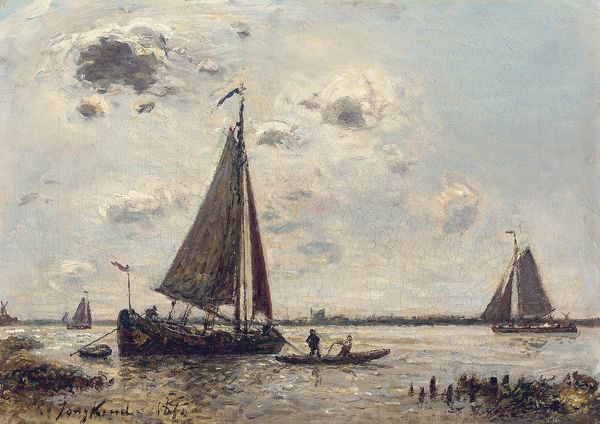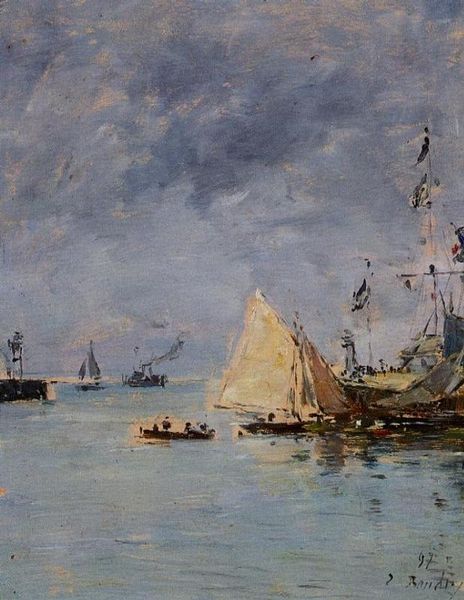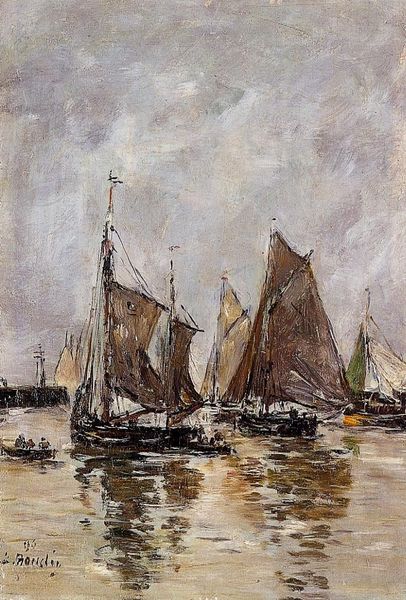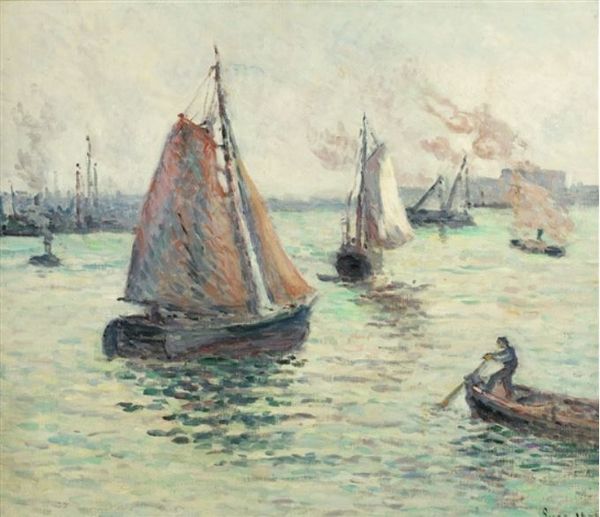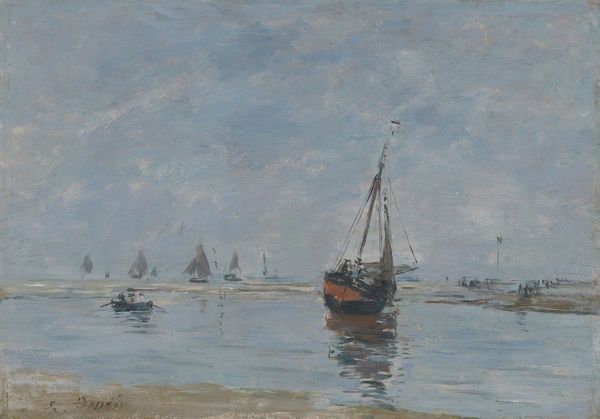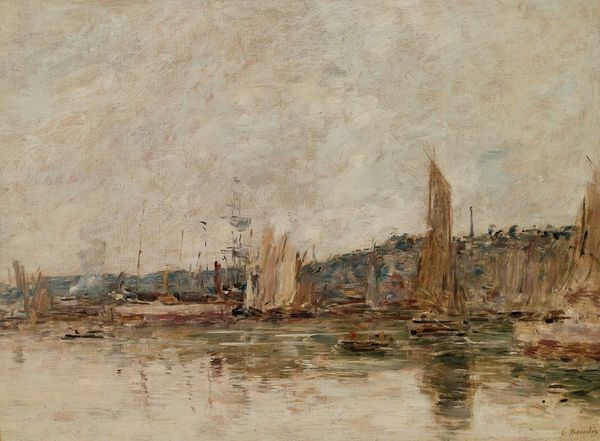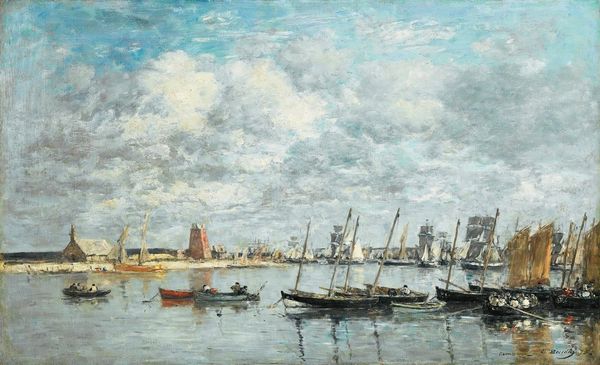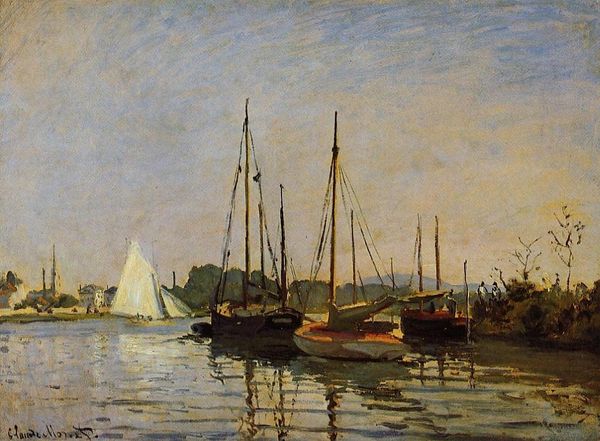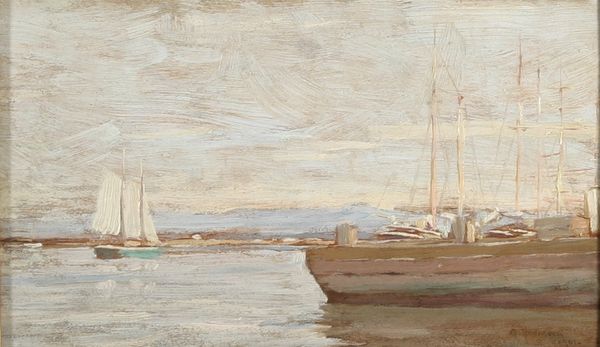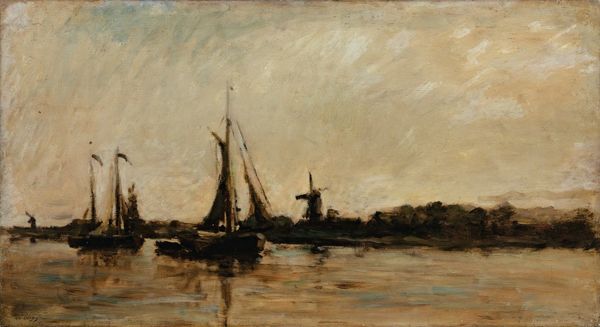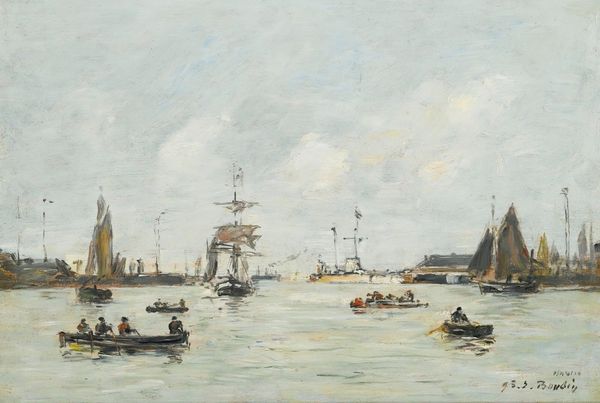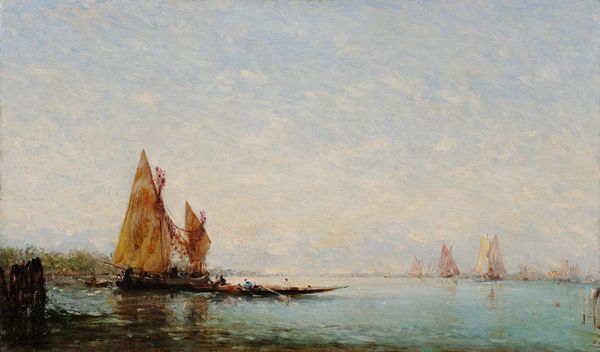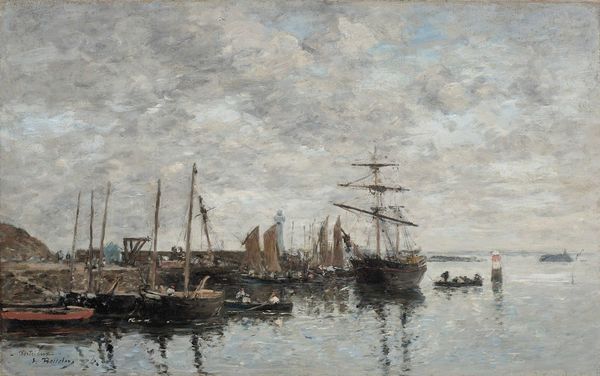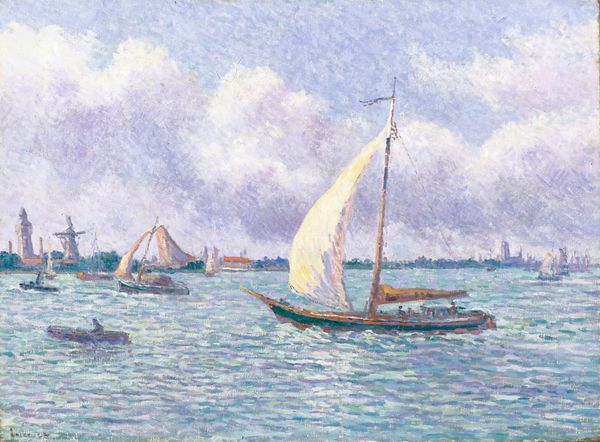
Copyright: Public Domain: Artvee
Editor: Here we have Eugène Boudin's oil painting, "Trouville, Les Jetées Marée Haute," created sometime between 1885 and 1890. It's a delicate rendering of a harbor scene, but it's the thick application of the paint that really strikes me. What can you tell us about this work? Curator: Considering Boudin's subject matter here, the means of production really speak to the rise of leisure and tourism in late 19th-century France. These harbors became sites of exchange, not just of goods but of social classes and artistic ideas. What do you notice about the boats themselves? Editor: Well, some look like working vessels, and others more recreational? Is that deliberate? Curator: Absolutely. Boudin's choice to depict both acknowledges the economic realities of the coastal communities *and* the burgeoning tourist industry that reshaped them. Look at how he's built up the surface with impasto— what does that physical act of painting evoke for you in terms of labor? Editor: It almost feels like a form of manual labor itself, mimicking the physical effort of the port workers, even while depicting a leisure scene for the rising middle class. Curator: Precisely. He's transforming a traditionally "low" subject - work - into something elevated, forcing us to consider the conditions of its production and consumption, the material realities beneath the surface. The very substance of the painting hints at social transformation. Editor: That's a very different perspective from thinking about Impressionism as just pretty landscapes. I see so much more at work here. Thanks for that insightful point, it brings a new layer of understanding!
Comments
No comments
Be the first to comment and join the conversation on the ultimate creative platform.
